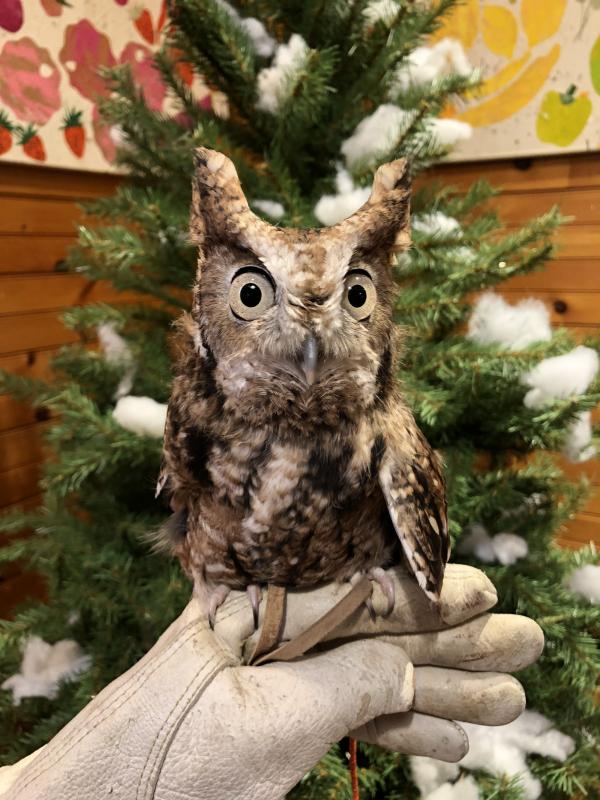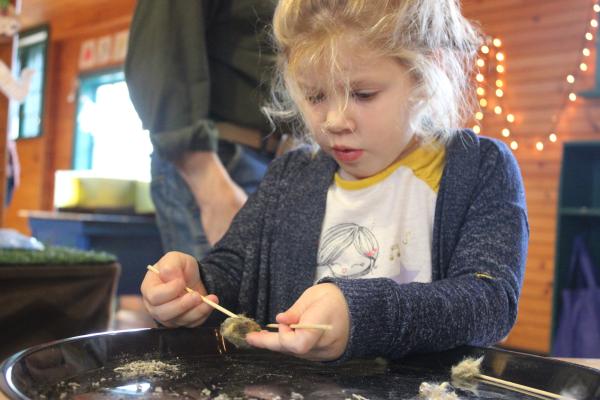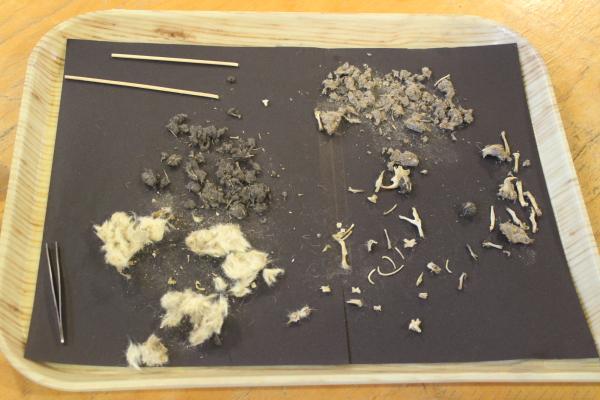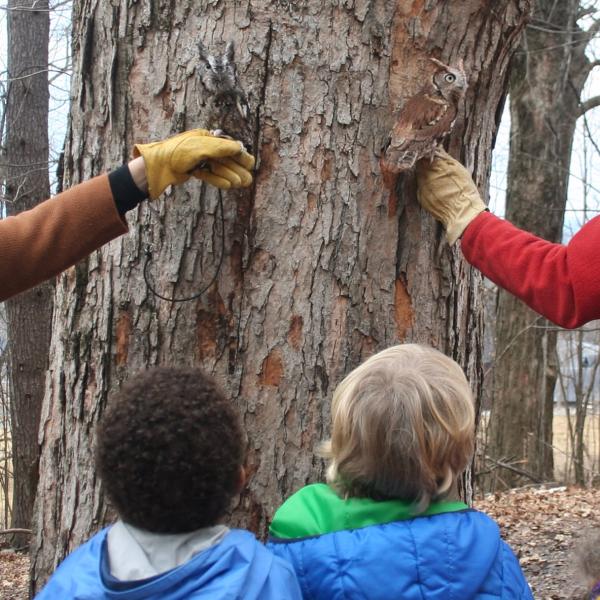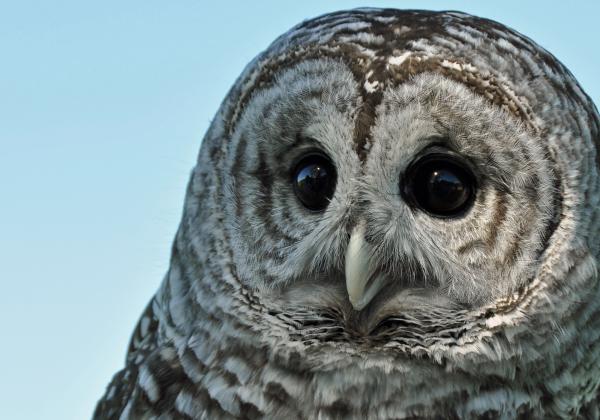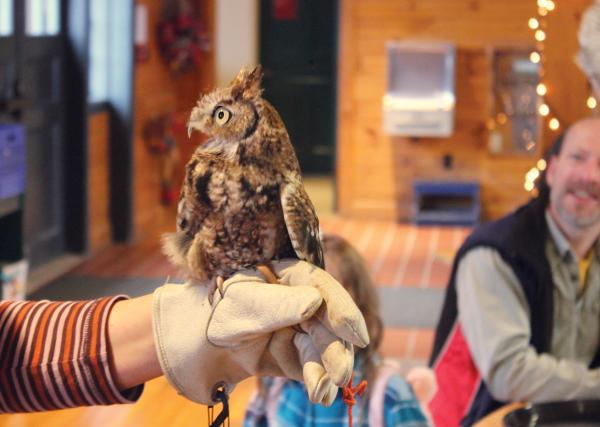Up Close with Owls
At our recent Owl Pellet Detective Family Program, kids asked lots of questions about owls! Craig Newman, director of Outreach for Earth Stewardship (OFES), and I offered up some answers. We also introduced two educational owl ambassadors, Carson (an Eastern Screech owl), and Chapin (a Barred owl).
Do owls chew?
Nope. Owls don’t have teeth. They use their sharp beak to tear apart prey into bite-sized (or bigger) pieces. But owls can’t digest bones and fur, so they regurgitate these components in pellet form. By dissecting the fur and bones in the pellets, you can tell what an owl has been eating!
(The pellets used in our program were sanitized first by being cooked in an oven or microwaved to kill bacteria.)
What does an owl eat?
In the wild, owls eat mice, rats, and lots of amphibians, like frogs. This gives you a hint about where they like to live: near a pond or a swamp, and in the surrounding woods.
OFES ambassador owls, which all have past injuries that prevent them from being released to the wild, are fed primarily mice and rats. Carson gets fed a 3-inch long mouse once a day!
Are the mice dead when they get fed to the OFES owls?
Yes. The mice are quite dead. (Any OFES bird that can hunt, catch, and kill live prey on its own gets released to the wild.)
How much does an owl weigh?
Carson, the Screech owl, weighs about half a pound. Chapin, the Barred owl, weighs a little less than 2 pounds. For the owl handlers, holding even a half pound on your arm for any length of time gets pretty tiring!
Can Carson hear?
Yes! Owls have great hearing. That’s primarily how they locate their prey. An owl can hear your human heart beating! In winter, an owl can hear mice moving several inches under the snow.
But don’t be confused. The ear tufts on a Screech owl (and several other owl species), aren’t ears at all! An owl's ears are actually located on each side of its face around the edges of its facial disc. Some species of owls even have asymmetrical ears that help them to precisely triangulate the location of their prey.
The ear tufts, on the other hand, are for display, and may help camouflage owls against the rough edges of tree bark. Each ear tuft is called a plumicorn! How fun is that to say?
Why are an owl's eyes so big?
Owls have big eyes to help them see in very low light. In fact, they can see in what to us appears as total darkness, and this helps them locate prey at night, which is when they hunt. Both eyes are located on the front of its face, which gives an owl binocular vision to better judge the location of its prey.
But an owl’s eyes can’t move. They’re fixed in its head. To compensate, an owl has twice as many neck bones as we do (14 vs. 7). When it wants to look up, down, or side to side, it swivels its head.
And owl eyes have two extra sets of eyelids! They have an upper eyelid that closes when the owl blinks, and a lower lid that closes when the owl sleeps. The third eyelid, called a nictitating membrane (another fun word to say!), is a thin tissue that closes across the eye to clean and protect the eye’s surface.
How long do owls live?
According to the Cornell Lab of Ornithology, the oldest wild Screech owl on record was 14-½ years old. OFES non-releasable owls have a longer life expectancy because they are fed a regular, healthy diet, can heal from injuries, are protected from predators and basically are well taken care of.
Why is Carson making noise?
She’s annoyed at being awake right now! Owls are nocturnal -- they are mostly awake at night -- so she’d prefer to be sleeping at 10 am.
Can we touch her?
Wild animals get stressed out being touched by a species other than their own (probably because it mostly happens when an animal is being caught and eaten by another one for dinner!). Also, an owl only gets one set of feathers a year, so if it were touched a lot, its feathers would wear prematurely and lose the ability to keep the owl warm and dry. And of course, birds of prey are known for their sharp beaks and talons, so touching them is not really safe for you either!
Be an owl detective next time you’re in the woods! Look at the base of trees for owl pellets, and if you see one, use a stick to break it apart to see what that owl has been eating. You might even look up to see if the owl is silently sitting on a branch!
Our family and adult programs spark each learner's curiosity and wonder about how the natural world works. We hope to build empathy with living things and an understanding that we're all connected -- the foundation for care and action.

